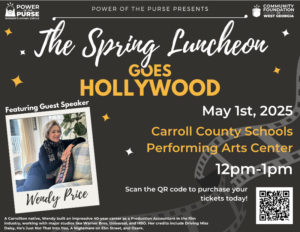Villa Rica police intended no racial bias but did show a “lack of awareness and judgment” in choosing a target depicting a Black man during a June civilian firearms class, according to an external investigation of the matter.
The investigation, ordered by Villa Rica Mayor Gil McDougal, also found no evidence of biased policing within the department. Nevertheless, the report recommended reinforcement of anti-bias training. On Tuesday (August 6) , the City Council approved additional outside implicit bias training for the entire police force.
McDougal ordered the investigation after social media posts about the firearms course by the VRPD resulted in many responses and media coverage that placed the city in the national spotlight.
The focus of the complaints was the choice by course instructors to exclusively use a paper target with a photo of an armed Black man during a portion of the class conducted at a gun range.
“This report supports my initial belief that this choice was not intended to cause harm,” McDougal said. “But I must also acknowledge that the anger we received was heartfelt and understandable. It represents a social issue that is much bigger than one incident in one small Georgia town.”
The external review was conducted by retired LaGrange, Georgia, Police Chief Lou Dekmar, a 50-year veteran of law enforcement. Dekmar is also a graduate of the FBI Academy and previously served as a federal monitor for the U.S. Department of Justice, Civil Rights Division.
Dekmar’s 111-page report was prepared during July and reflects interviews with police officers conducting the civilian exercise, as well as participants and others. It also includes an analysis of the racial identities of those arrested for traffic and other offenses, as well as racial bias polices VRPD officers now follow.
The report concludes with 16 findings of fact and five specific recommendations for the police department. The recommendations include using silhouette targets instead of photo-realistic ones in future civilian exercises, and continued or enhanced training for officers to avoid reinforcing negative cultural stereotypes.
While noting that photo-realistic targets that depict armed individuals is part of standardized police training across the country, the report said the VRPD officers conducting the course should have been more sensitive to public perception.
According to the report, the civilian gun safety course is a longstanding event for the Villa Rica Police Department, and similar courses are taught by other municipal and county law enforcement agencies across the state.
The controversy over the June 2023, firearms course arose after the VRPD posted an item about it on the department’s Facebook page. The post included photos and a video showing class participants firing at identical targets, all of which depicted an armed Black man.
Public comment swiftly followed the posting, prompting Police Chief Michael Mansour to respond online, and in the days that followed both he and Mayor McDougal conducted several media interviews. Although Mansour initially told media representatives that targets showing diverse races and genders had been used that day, he discovered later that he had misinterpreted what an on-scene officer had said. In fact, only one target type was used during the firearms class.
For his report, Dekmar interviewed police officers and civilians who were part of the training exercise, either as a participant or as an organizer. The names and identifying information for those civilian participants are redacted in the final report. Although some of them expressed concern after the fact, Dekmar found that no one raised an objection to the use of the target during the training exercise itself.
Dekmar wrote:
“[I]t is deeply concerning that no one within the VRPD present at the range, recognized the potential implications of using targets depicting only a Black male armed with a revolver. This lack of awareness and judgment is acknowledged by the police chief, who expressed regret and apologized upon learning of the incident” (Finding No. 10).
Dekmar’s report noted that the type of photo-realistic targets shown in the Facebook posting have been used by police agencies for the past 20 years. The targets used by the VRPD were supplied by the American Target Company and include a white man and woman, an Asian man, and a Black man. In police training exercises, overlays can be placed so that the individuals depicted can be shown holding various weapons, or no weapon at all.
Dekmar also reviewed data from the past five years of Villa Rica policing. Out of 36,254 traffic stops during that time, only four of those resulted in complaints of racial bias. Dekmar also found no evidence of bias in the stops themselves.
“Out of these stops, 10,519 or 28.7% involved individuals who were identified as African American. During the same period, a total of 4,339 vehicle searches were conducted, either pursuant to impoundment, probable cause, or consent. Among these searches, 39.6% or 1,719 involved African American individuals. The racial composition of Villa Rica, according to the most recent ACS data, shows that the African American population accounts for 40.2% of the total population. The percentage of African American individuals involved in traffic stops and vehicle searches is generally proportionate to their representation in the community.” (Finding 16)
Dekmar also found that while the police department’s Bias-Based Training Program “meets or exceeds accepted law enforcement standards” he found there is no stated policy on how often that training should recur. He recommended that that the training should be more standardized and that officers take written tests to gauge their understanding of the policy.
“By incorporating this requirement into the SOP [Standard Operating Procedure], the agency can underscore the importance of ongoing education and awareness regarding biases and their impact on policing … The inclusion of an annual written test adds an additional layer of accountability and encourages officers to actively engage with and retain the knowledge presented during training session.” (Recommendation 5).
At the August 8 City Council meeting, approval was given for an additional course on implicit bias training for all Villa Rica police officers. The training will be provided by the National Training Institute on Race and Equity, part of Morehouse College in Atlanta.
Dekmar found that while the use of photo-realistic targets depicting armed individuals is an accepted practice by police agencies, he said the VRPD should not use photo targets that “disproportionately depict individuals from specific racial or ethnic backgrounds” in its officer training (Recommendation 1)
But future civilian firearms safety classes should not use photo realistic targets, Dekmar wrote:
“Consideration should be given to silhouette or shaded targets for exclusive use for civilian training, while photo-real targets are reserved for law enforcement purposes. This approach will demonstrate the agency’s commitment to an unbiased learning environment and responsible firearms education. It ensures the agency respects all participants and avoids perpetuating stereotypes or causing unintended harm. By incorporating these considerations, the agency enhances the professionalism and integrity of the Firearms Safety Class while fostering a welcoming atmosphere for all.” (Recommendation 2)
The full report, including its seven appendices, can be found following this link.
Statement by Gil McDougal, Mayor of Villa Rica
Last month, our city and our police department were the focus of criticism over a Facebook post showing that a photo-realistic image of a Black man was used exclusively as a target at the Citizens Firearms Safety class taught by the VRPD.
The public response to this incident was a clear signal that it deserved a thorough review. Consequently, I requested an independent review of the matter, and we are releasing the findings and recommendations of that review today.
It supports my initial impression, but it also shows that there was a lack of awareness and appropriate sensitivity in this incident. We have already addressed this with the authorization earlier this week by the City Council for implicit bias training for all officers. This training will supplement the diversity training officers already receive, both internally and from the state.
The report also suggests that the use of these targets be discontinued in civilian courses, and I expect that the Police Department will implement this policy going forward.
Speaking for myself, I believe that this incident and the passionate response it has generated has a lesson to teach. Ultimately, I believe that much of the anger directed toward us has very little to do with Villa Rica. It comes from an important national discussion on policing and civil rights that is going on outside our town and beyond our control.
But this does not mean that our community is unaffected. The intensity of the criticism we received reflects that our citizens have sincere concerns – and these concerns must be addressed.
We are a community with common goals and dreams, and what affects some of us affects all of us. The criticism we received from within our community was very real and very sincere. We must do whatever is necessary to heal any rift within our town.
I believe that we must turn this negative event into a positive opportunity to unite our city and to restore whatever trust that may have been lost. This is a challenge we should all accept because it gives us an opportunity to build a stronger, more united Villa Rica.
Statement by the Villa Rica Police Department
Michael Mansour, Chief of Police
The Villa Rica Police Department would like to thank Retired Chief Lou Dekmar for the very thorough and detailed investigation of this unfortunate incident. His report and its findings are consistent with what we know of our own agency, and we believe the investigation shows our agency is absolutely committed to transparency and accountability.
In relation to this incident specifically, the report finds “[T]here is no evidence to suggest that the choice of the Black male target for the Firearms Safety Class was intentionally selected or intended to perpetuate stereotypes, or to promote bias against Black males (page 20.)
The report also supports the policies and review practices that are already in place to monitor and to discover racial discrimination which may occur through the course of administering a police agency. This includes the recognition of our comprehensive and longstanding tracking system which is designed to monitor officers’ activities on traffic stops and vehicle searches.
In considering the recommendations offered at the conclusion of the report, VRPD is now working to implement the suggested changes and enhancements to already existing systems. We will diligently work to meet the expectations of our community and to strive daily to provide the fair, effective, and professional police services demanded by the citizens of Villa Rica.

















